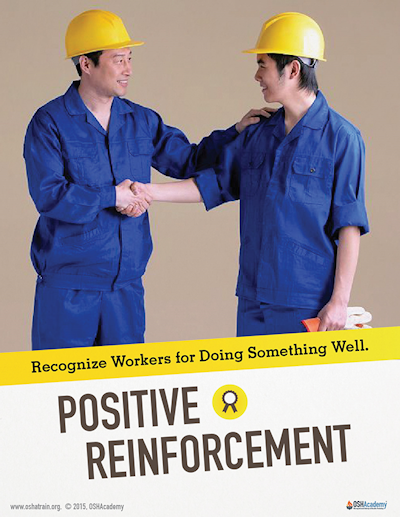Positive and Negative Recognition
To influence employee safety performance, managers and supervisors apply consequences in various ways. The strategies can be classed into two common types of recognition: positive and negative.
Positive Recognition
Positive Recognition occurs when the recognition of performance is perceived as a positive consequence (a carrot). (e.g., a hand shake, thank-you, or promotion). To receive positive recognition, employees will work hard to not only comply, but to achieve excellence. Positive recognition is best in producing performance excellence and a world-class safety culture. If a supervisor actively recognizes excellence, the supervisor will get excellent performance.
It's important to know that "desired" performance may not always be safe performance. Unfortunately, this may be true in safety cultures where it is more important to work fast than safe. In this instance, working fast takes top priority over safety. Prioritizing safety down is especially true when the employer is under pressure to finish a project on time. Here are some examples showing how perceived positive recognition can increase both safe and unsafe behaviors:
- Recognition that increases safe performance: The supervisor promises you won't be reprimanded if you comply with safety rules, so you are sure to follow the rules.
- Recognition that increases unsafe performance: Your supervisor gives you time off if you finish ahead of schedule, even if you jeopardize your safety.
Important criteria to remember about positive recognition include:
- It increases desired performance, and employees may work far beyond mere compliance to be recognized.
- The desired performance can be safe or unsafe. If the desired performance is to work fast, employees will prioritize working quickly, not safe.
- This strategy is more common when employers value, rather than prioritize safety.
- Employees may perform far beyond minimum standards through voluntary effort.
- If the desired performance standard is to work safely, no matter what - it's a value-based safety culture. It's "safe production or no production."
- This type of recognition is the most effective in achieving a world-class safety culture.
Knowledge Check Choose the best answer for the question.
2-2. Which strategy may result in performance far beyond mere compliance with safety standards?
You forgot to answer the question!

